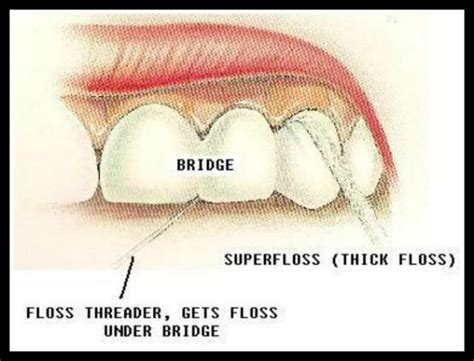The Secret to Flossing Under Your Bridge: Mastering Dental Hygiene for Bridge Wearers
Dental bridges are a fantastic solution for missing teeth, restoring your smile and chewing ability. However, maintaining optimal oral hygiene with a bridge presents unique challenges, particularly flossing under the bridge. Many find this aspect daunting, leading to plaque buildup and potential gum disease. This comprehensive guide unveils the secrets to effectively flossing under your bridge, ensuring your long-term oral health.
Why is Flossing Under a Bridge So Important?
Food particles and plaque easily accumulate under a bridge, making it a breeding ground for bacteria. This can lead to:
- Gum disease (gingivitis and periodontitis): Inflammation and infection of the gums, potentially causing bone loss and tooth loss.
- Bad breath (halitosis): Bacteria produce volatile sulfur compounds, causing unpleasant odors.
- Cavities: Bacteria can attack the teeth adjacent to the bridge or the abutment teeth (the teeth supporting the bridge).
- Bridge failure: Severe gum disease can destabilize the bridge, leading to its premature failure.
Regular and thorough flossing under your bridge is crucial to prevent these complications and maintain the longevity of your dental bridge.
What's the Best Way to Floss Under a Bridge?
The traditional flossing method won't work effectively under a bridge. Here's a step-by-step guide using specialized tools:
-
Choose the right floss: Traditional floss is too thick to navigate easily under a bridge. Consider using:
- Dental floss threaders: These are thin, flexible strands with a stiff end that helps you easily pass the floss under the bridge.
- Interdental brushes: Small, cylindrical brushes designed to clean between teeth and under bridges. Choose a size appropriate for the gap under your bridge.
-
Gentle insertion: Carefully thread the floss or brush under the bridge, avoiding forceful movements that could damage your gums. Be patient; it may take a few tries to master the technique.
-
Thorough cleaning: Once the floss or brush is in place, gently move it back and forth, following the contour of the gum line. Ensure you clean the entire area under the bridge.
-
Rinse: After flossing, rinse your mouth thoroughly with water or mouthwash to remove dislodged food particles and plaque.
What if I Can't Reach Under My Bridge?
If you struggle to floss under your bridge yourself, don't despair! Consult your dentist or hygienist. They can provide:
- Personalized instruction: They will show you the proper technique using your specific bridge.
- Alternative tools: They might suggest different floss types or recommend specialized tools.
- Professional cleaning: Regular professional cleanings are essential to remove plaque and tartar that you may miss while flossing at home.
How Often Should I Floss Under My Bridge?
Ideally, you should floss under your bridge at least once a day, preferably before bed. This removes accumulated plaque and prevents overnight bacterial growth.
What are the Signs of Problems with My Bridge?
Pay attention to these warning signs and consult your dentist immediately:
- Persistent gum bleeding: This could indicate gingivitis or another problem.
- Loose bridge: A loose bridge needs immediate attention.
- Increased sensitivity: Sensitivity might point to underlying issues.
- Persistent bad breath: This often indicates a bacterial infection.
What are the Different Types of Dental Bridges?
Understanding the different types of bridges helps you choose the best flossing method. There are primarily three types:
- Traditional bridges: Supported by natural teeth on either side of the gap.
- Maryland bridges: Bonded to the adjacent teeth using metal or porcelain wings.
- Implant-supported bridges: Supported by dental implants anchored in the jawbone.
The flossing technique might vary slightly depending on the bridge type, so ask your dentist for specific guidance.
How Can I Make Flossing Under My Bridge Easier?
- Practice: Mastering the technique takes time and patience. Don't get discouraged if it's challenging at first.
- Use a mirror: Using a mirror will help you see what you're doing.
- Use good lighting: Good lighting improves visibility and precision.
- Start slowly: Don't rush the process; prioritize thoroughness over speed.
By following these tips and techniques, you can effectively floss under your bridge, safeguarding your oral health and the longevity of your dental restoration. Remember, regular dental check-ups and professional cleanings are equally important to maintaining optimal oral hygiene. Don't hesitate to reach out to your dentist if you have any questions or concerns.

